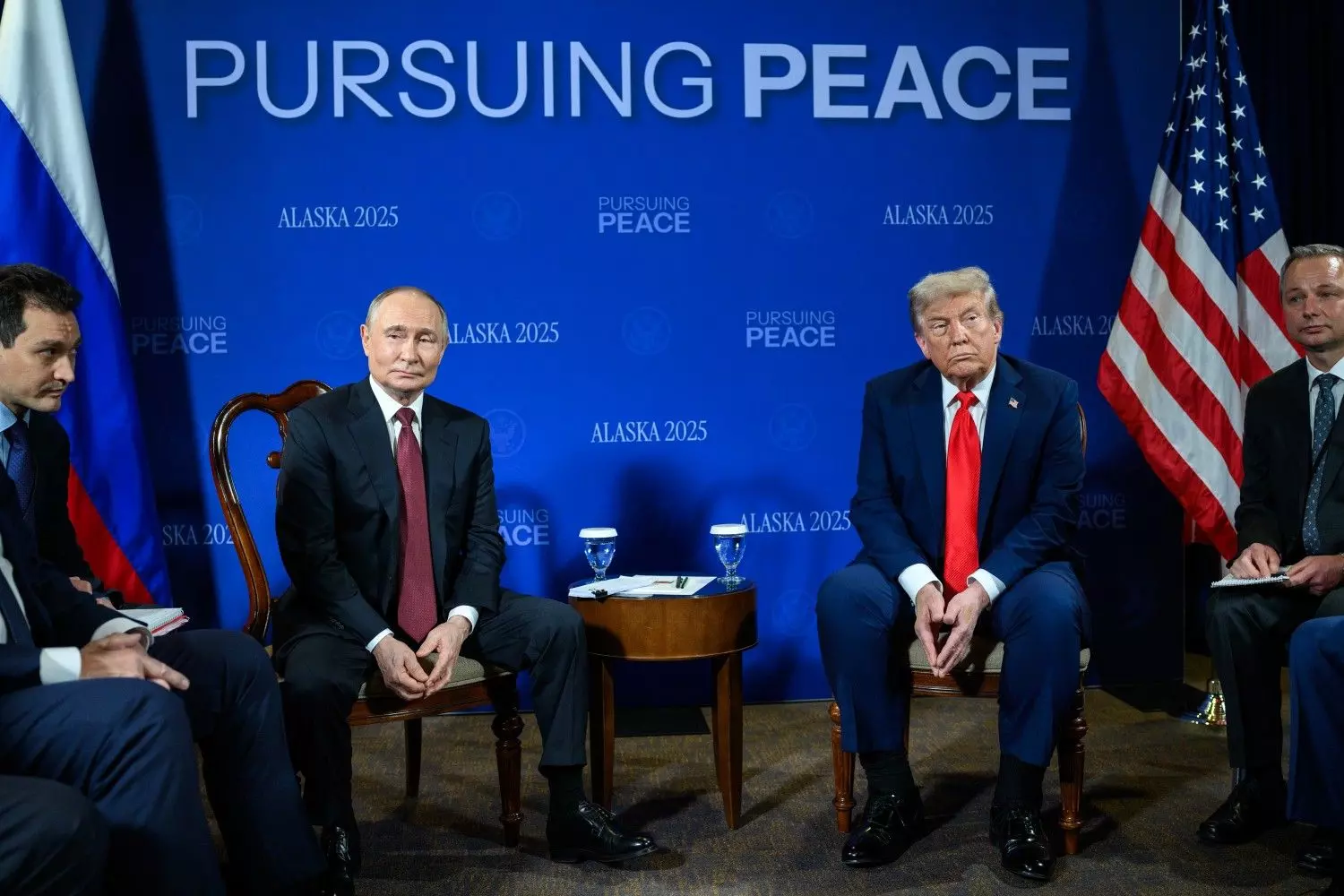
- Home
- India
- World
- Premium
- THE FEDERAL SPECIAL
- Analysis
- States
- Perspective
- Videos
- Sports
- Education
- Entertainment
- Elections
- Features
- Health
- Business
- Series
- In memoriam: Sheikh Mujibur Rahman
- Bishnoi's Men
- NEET TANGLE
- Economy Series
- Earth Day
- Kashmir’s Frozen Turbulence
- India@75
- The legend of Ramjanmabhoomi
- Liberalisation@30
- How to tame a dragon
- Celebrating biodiversity
- Farm Matters
- 50 days of solitude
- Bringing Migrants Home
- Budget 2020
- Jharkhand Votes
- The Federal Investigates
- The Federal Impact
- Vanishing Sand
- Gandhi @ 150
- Andhra Today
- Field report
- Operation Gulmarg
- Pandemic @1 Mn in India
- The Federal Year-End
- The Zero Year
- Science
- Brand studio
- Newsletter
- Elections 2024
- Events
- Home
- IndiaIndia
- World
- Analysis
- StatesStates
- PerspectivePerspective
- VideosVideos
- Sports
- Education
- Entertainment
- ElectionsElections
- Features
- Health
- BusinessBusiness
- Premium
- Loading...
Premium - Events

India, already in the firing line, will be expected to quickly state which side it will be on
With no end in sight to the conflict between Russia and Ukraine, the world appears to be teetering on the edge of a much-feared expansion of the war, going by the latest statements of United States President Donald Trump and his Nato allies in Europe.
Also read: Trump's peace efforts falter as conflicts in Ukraine, Gaza escalate
Trump, in his address to the United Nations General Assembly (UNGA) earlier this week, spoke of a Ukrainian victory. He explicitly stated that this would include taking back the territory in the east that has been occupied by Russia during the course of the war that broke out on February 24, 2022.
Putin blames Nato for Ukraine war
The US’s Nato allies have also suggested the presence of “peace-keeping” forces on the ground in Ukraine. Russian President Vladimir Putin has explicitly warned against such a move and reminded Nato that it was its expansion into eastern Europe that was among the reasons for the Ukraine war.
On Monday, a day before he addressed the UN, Trump announced that the US allies in Europe would finance the purchase of Patriot missile defence systems and other weapons for Ukraine. Worth “billions of dollars”, Trump said the US would manufacture it and would be paid for by Nato allies. From treating his European allies with disdain, it appears Trump has fallen in line with their vision on how to manoeuvre Ukraine’s ongoing war with Russia – without making too many concessions.
Also read: China and India primary funders of Ukraine war: Trump at UNGA
Trump, who had claimed he would end the war in “one” day, has made no bones about his frustration at not being able to convince Putin to negotiate a settlement with Ukraine. After the initial bonhomie and much praise for Putin leading up to the summit in Alaska, Trump’s mood appears to have soured.
Despite claiming to be so-called strategic partners, Trump has not spared India, imposing punitive tariffs of 25 per cent over and above reciprocal tariffs.
After publicly reprimanding Ukrainian President Volodymyr Zelenskyy in the White House in February for resisting his attempts to broker peace, Trump has now been quoted as praising Ukraine’s “courage” and praising Europe’s “spirit” in resisting Russia’s onslaught.
India, China face brunt of Trump’s anger
India, in particular, and China have faced the brunt of Trump’s anger as the maverick US president goes around looking for reasons why Russia is not capitulating despite economic sanctions. Among other reasons, he has repeatedly blamed New Delhi and Beijing for buying Russian oil which, according to him, is keeping Moscow economically afloat.
Despite claiming to be so-called strategic partners, Trump has not spared India, imposing punitive tariffs of 25 per cent over and above reciprocal tariffs. He is now pressuring his European partners to impose punitive tariffs of up to 100 percent on Indian and Chinese imports.
Also read: Putin briefed Modi on Alaska talks with Trump during SCO summit
What this indicates is that time is running out, in Trump’s reckoning. Given his reputation for unpredictability, the US president can be expected to do anything, including forging an even more direct role for the US and his Nato allies in the war.
If this happens, the war is sure to spread to other parts of Europe. Already, Denmark, Poland, and Estonia have been crying foul over Russian intrusion into their airspace. On September 10, a swarm of Russian military drones flew over Poland – some crashed and others were shot down.
War could spread to other parts of Europe
Denmark, too, complained similarly. Estonia accused Russia of sending its military aircraft over its airspace. Russia has denied these allegations but analysts say it could be an attempt by Moscow to see how Nato is reacting to these incursions, and as a diversionary tactic.
As recent conflicts have shown, the broader conflict will be fought with long-range, intercontinental missiles, powerful drones and in cyberspace.
If the war does indeed expand into other parts of Europe, it will result in a “with us or against us” scenario. India, already in the firing line, will be expected to quickly state which side it will be on. Ideally, New Delhi would prefer neutrality but given the geopolitical balancing it has attempted to do so far, the Modi government will find itself in a sticky situation.
Also read: Trump urges EU to impose 100 pc tariffs on India, China to put pressure on Putin
Continuing to buy Russian oil will be construed by the US-led allies as an act of war. If India discontinues buying oil, Russia will see it as a hostile act and a betrayal of a longstanding friendship – a veritable devil vs deep sea situation for the Modi government in New Delhi.
That apart, a more direct involvement of US and Nato’s “boots on the ground” in Ukraine will force China to show its hand in the conflict. So far, China has denied helping Russia militarily though it is widely acknowledged that the Xi Jinping government in Beijing is providing logistical and ancillary support to Russia.
Wars now fought with latest technologies
In the event of an expanded war, China too will be placed in a difficult position. Backing Russia openly will result in the 21st century’s first major global conflagration with scary consequences. Unlike the First and Second World Wars, today’s global war will be fought using the latest technologies.
As recent conflicts have shown, the broader conflict will be fought with long-range, intercontinental missiles, powerful drones and in cyberspace.
Long-standing rules of engagement meant for conventional wars are already obsolete as seen in the manner in which Russia and Ukraine have been fighting each other – with civilians deliberately targeted, for example.
Also read: Build in America or pay: Trump tariff threat rattles Indian drugmakers
Israel and the US have shown they can strike any part of the world at will with no repercussions – striking Iran, Lebanon, Yemen and even Qatar with the latest missiles and drones.
The latest India-Pakistan conflict during Operation Sindoor was another example of how nations can strike each other with low collateral damage and a focused attack on any given target. What this implies is that no one is safe, including civilians.
Interior regions of any country that normally would have been far away from the fighting frontline are as vulnerable as any other. Though defence against missiles and drones exist, recent experiences have shown that their efficacy is limited. Some of the missiles and drones will find their targets.
Trump has already assured Russia that Ukraine will not be offered Nato membership, a key demand of Putin – that actually triggered the war. But that by itself has not managed to stop the fighting.
Recall the surprise drone attack by Ukraine on June 1 called “Operation Spider’s Web” deep inside Russian territory that damaged at least 41 frontline fighter aircraft (including 12 strategic bombers) some of them positioned inside secret military bases, including in Siberia, some 5,000 km away from Ukraine’s capital, Kyiv.
Nothing concrete from negotiations
The consequences of the Ukraine-Russia war expanding are a prospect that the world can do without.
But, the war over the last 42 months has dramatically altered the ground situation.
Simply put, Ukraine’s President Zelenskyy wants Putin to move out his troops at least to the February 24, 2022 position, as it existed at the start of the war.
Putin has refused to move his troops out of captured Ukrainian territories in the eastern region including Donetsk, Luhansk, Kherson and Zaporizhia (in all, around 20 per cent of Ukraine) as he wants that to be a buffer zone to protect Russia against any future Nato threat.
Trump has already assured Russia that Ukraine will not be offered Nato membership, a key demand of Putin – that actually triggered the war. But that by itself has not managed to stop the fighting.
Publicly, both Zelenskyy and Putin have expressed themselves in favour of a Trump-negotiated settlement, but it stops there. No concrete progress has been made during the negotiations. In fact, a much-anticipated sitting between Putin and Zelenskyy (after Trump-Putin’s summit in Alaska) has failed to materialise so far.
As the world breaks out in cold sweat, the main actors continue to verbally spar and make their military moves – a situation that can easily explode into a major conflagration if even one among the contending parties makes a wrong move.


